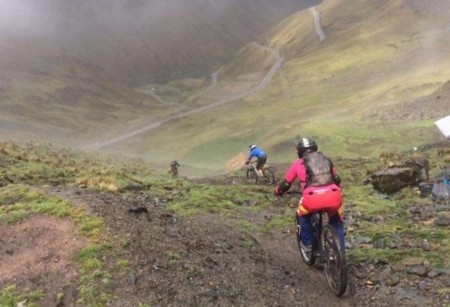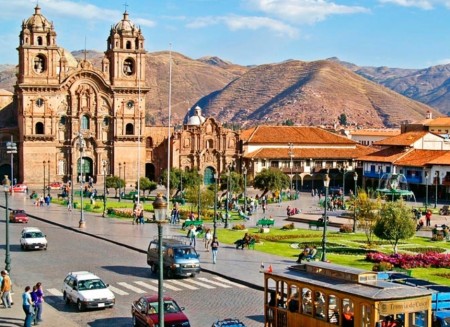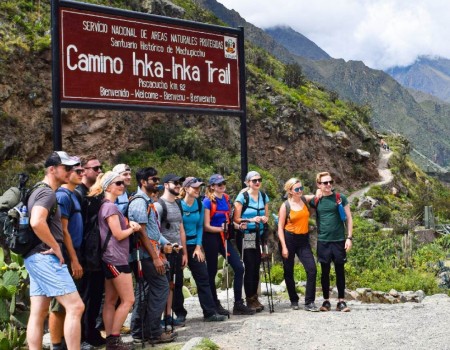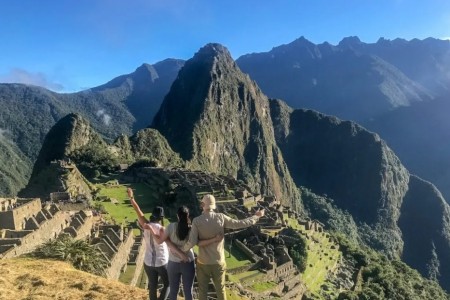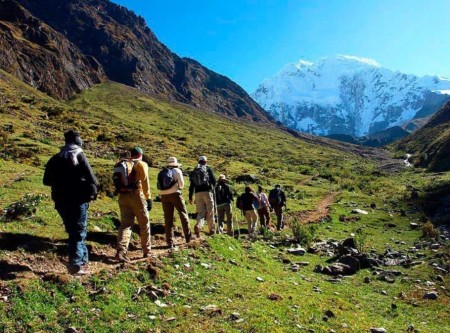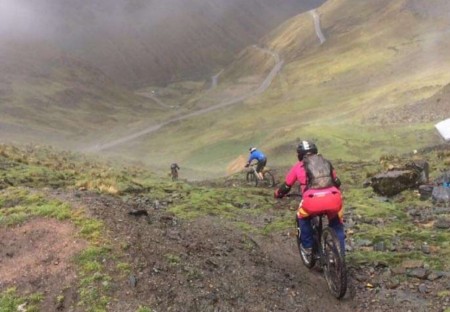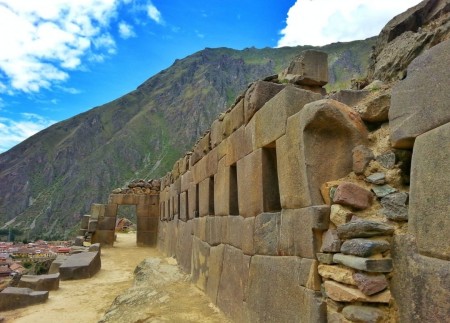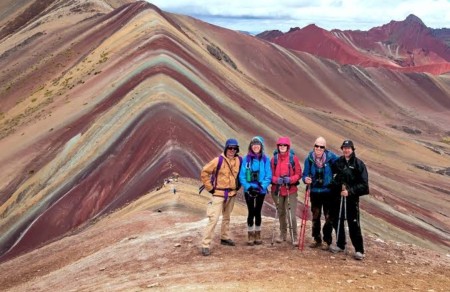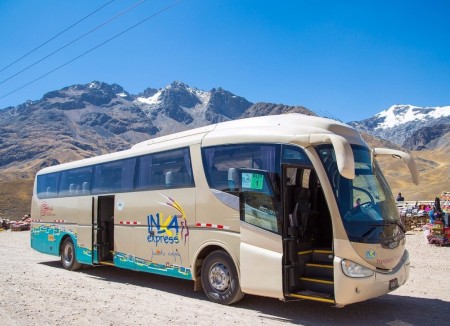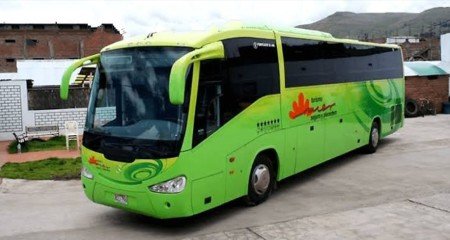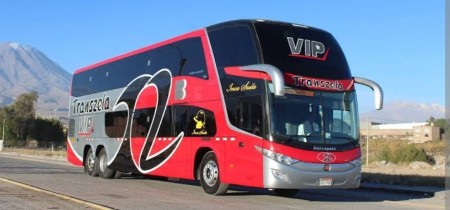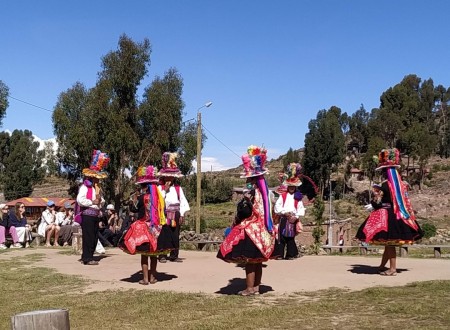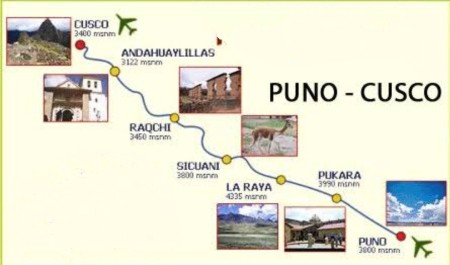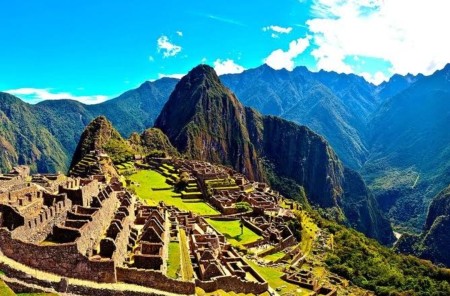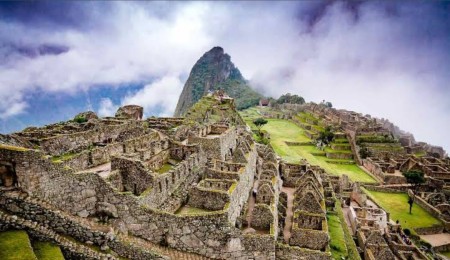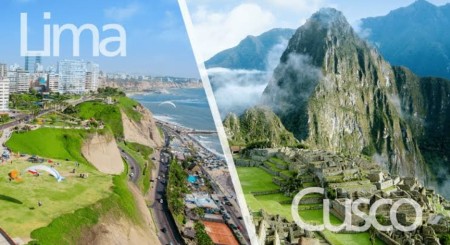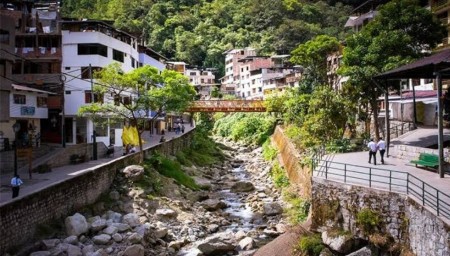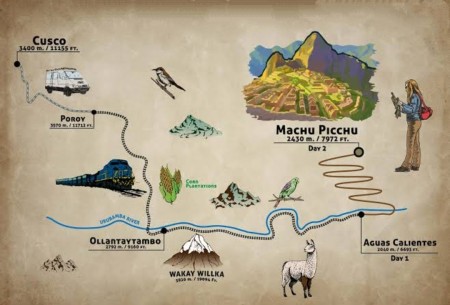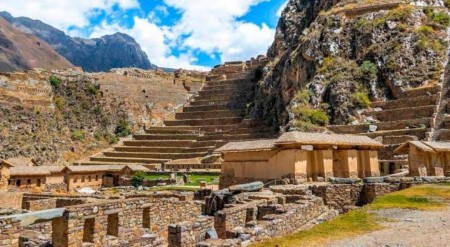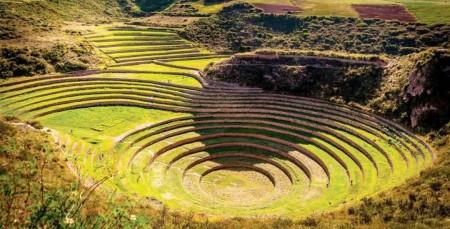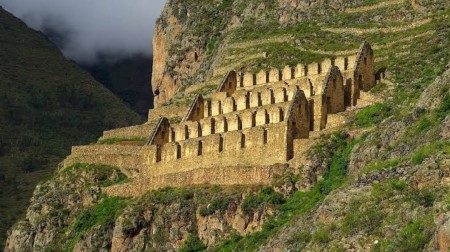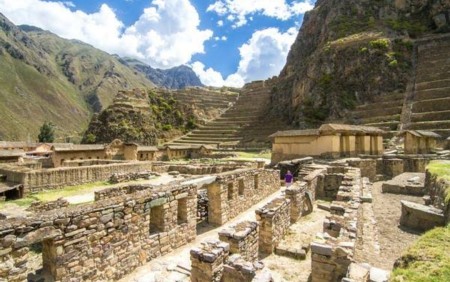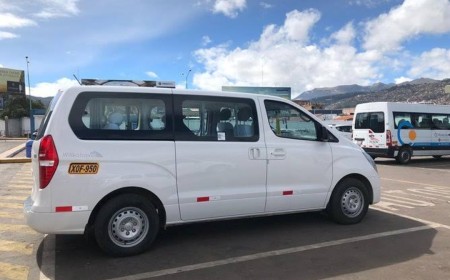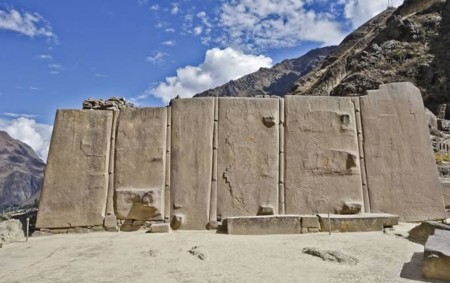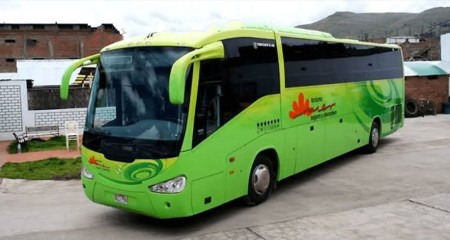Taquile Island Day Tour
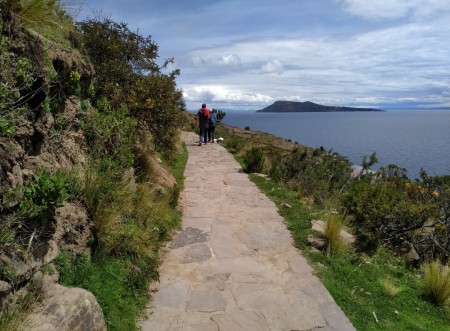
US$ 35 per person
Taquile Island Day Tour is one of our Best Lake Titicaca Tours.
On Taquile Island Day Tour you're going to make a stop at Uros floating islands and see how they live on these particular floating homes on your way to Isla Taquile.
This guided Lake Titicaca day tour from Puno includes lunch in Taquile, a remote tiny spot of land in the middle of Lake Titicaca where the most fascinating heritage is that the only ones who do the knitting are the men.
You may be looking for information about more things to do in Puno, so visit our Lake Titicaca Tours, where you can compare attractions, itineraries and prices.
Uros islands, Taquile, Amantani and Sillustani are the top attraction in Puno. Join us on a half-day, full-day or multi-day tours.
If you have one full day in Puno and you would like to go on a not-so-exhausting day trip on Lake Titicaca, including the visit of Uros and Taquile islands then Taquile Speed Boat Tour is what you are looking for:
Isla Taquile Tour Features
- Tour duration: 8 hrs approx.
- Type of Transportation: by speed boat
- Departure Times: 7:10 am - 3:15 pm
- Tour Frequency: Daily
- Attractions: Uros & Taquile islands
Lake Titicaca Day Trip Itinerary
Now, read about Taquile Tour 1 day schedule and be ready to enjoy the beauty of these attractions.
7:10 - 7:20am Transfer from hotel to port
You'll be picked up from your hotel in downtown and then driven to Puno port.
Other participants of Uros Taquile Islands Tour will be transferred as well.
7:20 am - 7:30 am Embark on the boat to go to Uros Tour.
Boat transportation section is covered and has panoramic windows that you can enjoy the scenic views while you're listening to your English Spanish speaking guide's explanation.
7:50 am - 9:30 am Our first stop at Uros floating village Peru.
We'll step on one of the islands and you'll find out how the Uros people built their homes entirely from Totora reeds, and how they forge a subsistent lifestyle floating in the middle of Lake Titicaca.
Rides on traditional reed boats (balsas) can be arranged with the locals for an extra cost of S/. 10.00 Approximately.
In the mornings these islands can be crowded. However if you are interested in only visiting the Uros Islands and off the beaten path, then what you're looking for is our "Authentic Uros Floating Islands Tour".
We're going to visit two of the 80 islands before continuing on to Taquile Island 09:30am Boat ride out to Taquile Island Lake Titicaca Peru
After a relaxed navigation of an extra 1 hour 20 min, getting the chance to sunbathe on the top deck, enjoy the spectacular views offered by Lake Titicaca, or just watch the world go by as you cruise the world’s highest navigable lake, until we get to Taquile Island.
11:00 pm arrival to Island of Taquile Lake Titicaca and Guided Tour
Here lives a unique communitity. Where an amazingly art textile is well conserved throughout the time.
A long path gradually ascending (40 min. hike approximately) will take us to the village to its small main square, the views are beautiful.
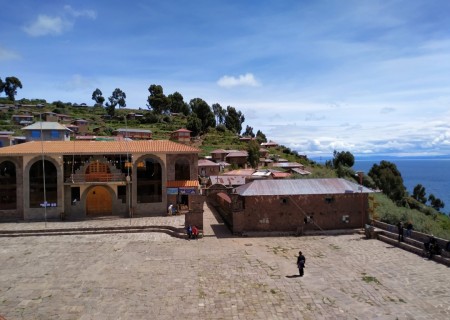
Visit the communal cooperative where you will find handicraft textiles of high quality.
The views are magnificent.
On Taquile and Uros Island Tour you'll learn the traditional history, lifestyle and
cultures of the island community.
On your Lake Titicaca Full Day Tour includes walk along the island to some of the best viewpoints and lunch on the island is included as well.
Before or after the lunch local people usually show a performance of their traditional colourful dances.
2:00pm – Return boat ride to Puno
At this hour we'll depart back to Puno City (this boat ride back is 1 hour 30 min return journey, directly to Puno).
3:30 pm Arrive into Puno.
At this hour we arrive to Puno. On arrival to Puno we will transfer you to your Puno hotel.
Lake Titicaca Full Day Tour inclusions:
- Speed Boat transport
- English Spanish speaking tour guide
- Entry tickets to Uros Floating Islands and to Isla Taquile.
- Lunch in Taquile
- Hotel/Port to port/hotel transfers
This excursion does not include:
- Reed Boat Ride (Mercedes Benz) in Uros Islands: S/.10 soles – this is OPTIONAL but the locals will try to sell this to you.
Puno Uros floating Islands
The Uros indigenous people that spoke the Puquina language were the ancestors of the current inhabitants of Puno Uros floating islands.
They were the first ones to master how to use bundles of dry Totora reeds to make reed boats (balsas), and to make the islands themselves.
Today's Uros islands inhabitants speak Aymara but live pretty much as their predecessors.
Uros islands can be also visited in the morning, at middle day or in the late afternoon on a half day tour Lake Titicaca.
Taquile Island
Taquile Island is seemingly on top of the world. In the middle of the Peruvian half of Lake Titicaca, the shores of Taquile sit at 12,959 ft (3,950 m) above sea level, while its highest point reaches 13,287 ft (4,050 m).
Despite its (literally) breathtaking elevation, the island’s size is pretty modest at 2.21 square miles (5.72 km²). However, it is still the second largest Peruvian island on the lake after Amantani Island.
The island is located 28 miles (45 km) from the region’s largest city Puno on the lakeshore.
Before you go check out TripAdvisor's things to do list in Puno. Find out that the Island of Taquile is rated as the #2 of 26 things to do in Puno
https://www.tripadvisor.com/Attraction_Review-g298442-d313934-Reviews-Taquile_Island-Puno_Puno_Region.html
Following the reed channels from the famous Uros floating islands, the next stop is the island of Taquile.
It takes about 1 hour 20 min by fast boat to reach the island from Uros (by regular slow motor boat this would take almost 3 hours).
Here we'll see and encounter an ancient indigenous community that has learnt how to conserve its original, genuine traditions and Andean political organization throughout the time.
Taquileños to this day continue to live a traditional lifestyle uninterrupted from modernization and have just recently opened up the island to tourists.
Taquile Island Textiles
The Island of Taquile is known for its textile art besides of its nature beauty.
Taquileños are known worldwide for their fine handwoven textiles and clothing, which are regarded as among the highest-quality handicrafts in Peru.
In their textiles, the islanders depict their belief systems and culture, in complex designs that pay homage to the richness of their ancestral heritage.
Taquile Island History
Taquile Island has a colorful history. The island was once part of the vast Inca Empire until the Spanish conquered the territory during the 16th century. The Incas called it Intiqa, and the Quechua locals—descendants of the Incas— still called it that today. The name Taquile comes from the Spanish nobleman Pedro Gonzales de Taquila.
The Spanish imposed cultural restrictions on the inhabitants of the island. For example, they weren’t allowed to wear traditional Inca clothing but had to wear campesino, or peasant, styled clothing instead. However, because of the island’s remote location, especially at a time without motorized boats, many other local customs remained intact.
Today’s islanders, numbering around 3 000, continue the generations-old tradition of subsistence farming and fishing.
The charm of Lake Titicaca is lived intensely on islands like Taquile, where the history that has survived in the collective memory of its people is expressed in wonderful weavings, true works of art admired throughout the world.
It was once used as an Alcatraz-style prison by Spanish colonialists, but now the island is inhabited by 3,000 Quecha-speaking Taquileños.
The locals grow crops like corn, beans and quinoa on the pre-Incan terraces that cover its hilly terrain. Thanks to a largely vegetarian diet, the locals are said to live an average of 90-100 years. The island is largely untouched by modernity with not even a bicycle, let alone a car, to be seen.
Taquilenos run their society based on the Inca moral code which states "do not steal, do not lie, and do not be lazy"; Visitors can explore the island’s trails and visit ancient agricultural terraces and the vestiges of Inca ceremonial sites.
Taquile Island Knitting
Knitting is exclusively performed by males, beginning in early boyhood.
Women spin wool and use vegetables and minerals to dye the wool to be used by the community. Women are also the weavers of the Chumpis, the wide belts with woven designs worn by everyone in the community of Taquile.
On the island, it's the women’s job to weave while the men have the task of knitting, a skill they learn from a young age. The hats they knit represent different stages of life: a white section means that a man is single, while a red hat signifies that he is married.
These traditions have helped earn Taquile and its textile art the honor of being named "Masterpieces of the Oral and Intangible Heritage of Humanity" by UNESCO.
Taquile is the perfect place to purchase high-quality handicrafts that are unique to the island, as they are never exported and only sold on the island or presented as gifts.
Perhaps what Isla Taquile is most well-known for today is its weaving tradition.
Weaving is, of course, an integral part of local culture in many parts of Peru. It is a way for indigenous peoples to represent their history and society with geometric and natural shapes as well as colors. The weavers of Taquile Island, in particular, have an interesting tradition where both women and men take up the loom.
Tourism on Taquile took off in the 1970s and transformed their weaving traditions.
With such international interest in their woven goods, locals adjusted their patterns and colors for an international market. For example, the traditional background color for Taquileños’ woven goods is red. However, many started to use purple as a principal background color to appease their new international buyers. Also, to keep up with increased demand, local weavers now buy factory spun yarn rather than hand spinning the wool themselves.
If this makes you hesitant to buy woven goods on the island to bring home as a Peruvian souvenir, don’t fret. They still make all of their products using local traditional techniques, including a four-point grounded loom. In fact, Taquileños are among the few indigenous communities in Peru to forgo Western dress and keep their traditional garments.
The patterns and colors may have evolved over time, but the meaning is still present in their work. Even UNESCO has recognized their incredible local art by recognizing Taquile and Its Textile Art as a “Masterpieces of the Oral and Intangible Heritage of Humanity” in 2005.
Taquile Island without Tour
Taquile welcomes approximately 40,000 tourists each year (before Covid 19). Most people visit the island on a full day tour of Lake Titicaca, but you can also stay overnight on Taquile.
Tour boats drop visitors off at one end of the island, where a steady walk along a well-paved path provides time to admire the scenery. Lunch is often enjoyed at one of the many family restaurants where local delicacies such as trout and quinoa soup are available. Tours often conclude with a visit to the central plaza where handicrafts can be purchased.
How do you get to Taquile Island from Puno?
Full day self-guided tour
It is also possible to visit Taquile without reserving a tour. From Puno’s port you can take a public ferry to Taquile. These ferries are called colectivos in Spanish and cost 25 soles, or about US $7, roundtrip. The morning ferry for Taquile officially departs at 7:30 am. However, it may leave a bit earlier or a bit later depending on how long it takes for the boat to fill up.
Once on Taquile, you will be able to roam around the island at your own pace. You can drop in on touristic areas and textile shops, hike to the farthest ends of the islands, or both. Just be sure to check the time for your return boat in the afternoon. Since the island only has homestays, it may not be very easy finding lodging should you miss it!
Spending the night in a homestay on Taquile gives you the chance to meet locals and their family.
Where to stay on and around Taquile Island?
Overnight tour
For those who want to spend more time on Taquile Island, it is also possible to spend the night. Locals are ready to welcome tourists into their homes. Houses on Taquile are quite modest. Although the island has several solar panels, most homes don’t have electricity. Also, your hosts may have an outhouse rather than indoor plumbing. However, spending this extra time with an indigenous family is a rewarding experience that you will surely remember for the rest of your life! Away from the distractions of your everyday life, slow down to enjoy the sunset over the Peruvian altiplano and learn more about an alternative way of life. Another Lake Titicaca homestay option is on Amantani Island.
Whichever adventure you choose, a full day of exploration or two, return to your cozy Puno hotel for a well-deserved rest.
What’s included (what we provide)
- Transfer to Dock.
- Boat transportation
- English-Spanish speaking group guide
- Entrance fee
- Lunch on Taquile Island.
- Drop off by hotels.
Request Further Information. Get more. Do more.
If you have questions and doubts about Taquile Island Tour, take your time in telling us your inquiries and we’ll show you a lot more options to do.
Just email us at:
Or WhatsApp us to:
+51 965154772 (Fredy, the guy responsible of answering your emails and inquiries at headquarter)
How to book
- You can get it fully booked by paying an Initial Amount via PayPal and the Total Balance must be paid in USD or PEN cash at the end of tour, then this is how you’ll get your Tour Confirmation from us.
- After we receive your “Booking Request”, we'll back to you as soon as possible with the PayPal link and the exact first amount to be paid.
- Additional information and requirements will be detailed on the email (or via WhatsApp).
After we receive your email we'll back to you as soon as possible with the PayPal link.
The exact amount and additional requirements will be sent to you later.
Now please, start by filling the Booking Form below.

